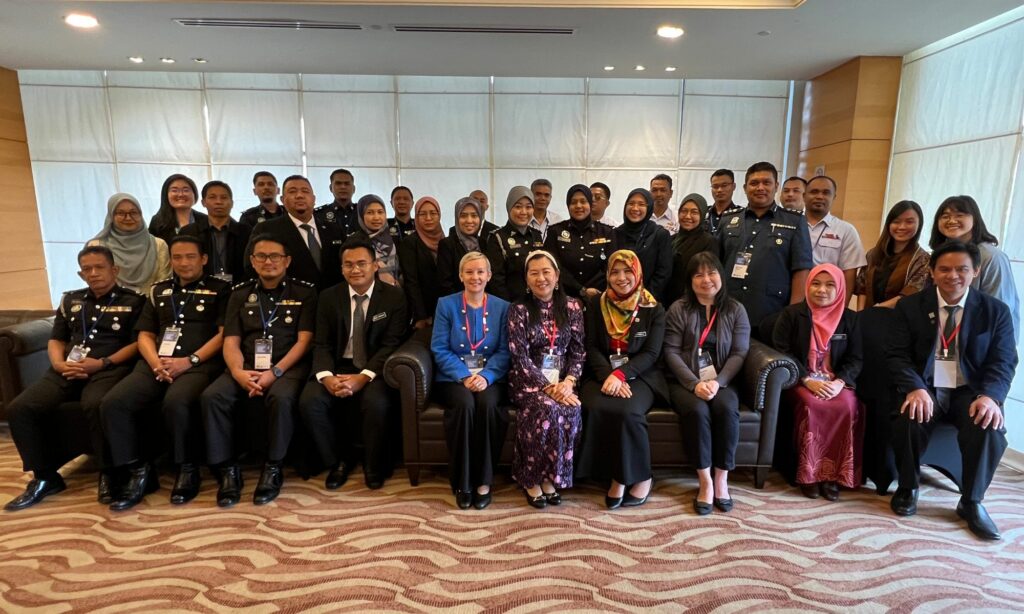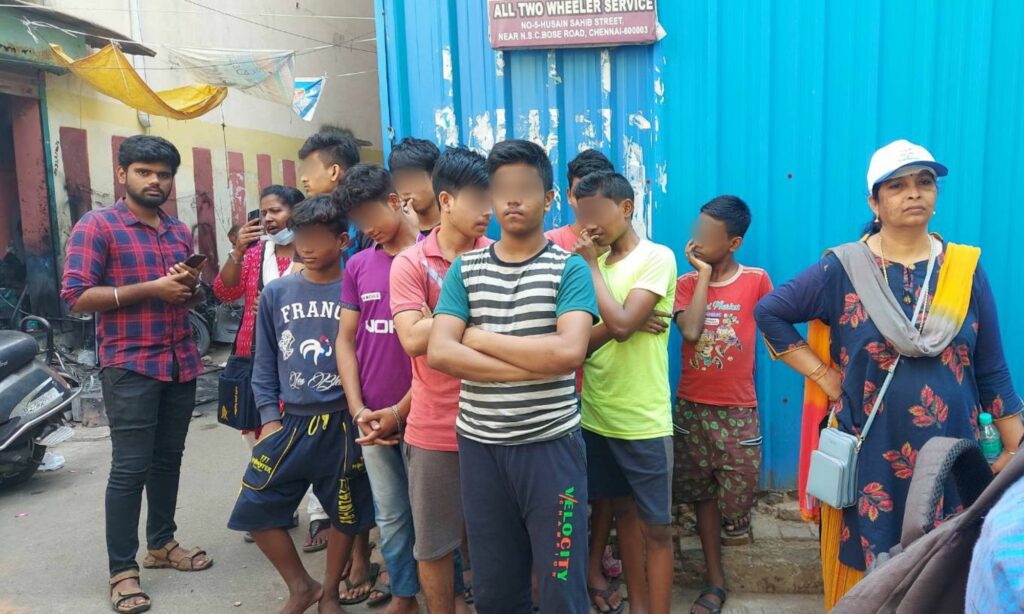Children need companies to design platforms for safety as effectively as they innovate for profit. Kids need governments to regulate the internet the way they regulate physical spaces—with protection and accountability as priority. And civil society organizations must play their role too, sharing promising models and practices while amplifying survivor leaders globally.
These imperatives are in the Global Principles on Digital Safety, published by the World Economic Forum, and recent global experience affirms their truth.
For instance, the world is moving on from the COVID-19 pandemic in large part because of the urgency with which corporations, governments and research institutions collaborated to develop and deploy vaccines. A process that normally takes 10-15 years was accomplished in only 12 months because of i) urgent ii) global collaboration.
Another pandemic that continues to rage—child sexual abuse and exploitation online—similarly needs urgent global action. It is crystal clear that digital spaces and internet-connected, camera-enabled devices pose growing opportunities for offenders to sexually abuse children with ease, anonymity, and impunity. And much is at stake.
In my 8 years leading International Justice Mission (IJM) teams in the Philippines, I saw firsthand the harm caused to children sexually abused real-time in video calls, as directed by paying sex offenders in Western countries. These offenders abuse their financial power to exploit children remotely, producing new CSAM (child sexual abuse material). The Australian Institute of Criminology found a median of $51 being paid by sex offenders, equivalent of just over £31 Euro or $33USD, per abusive livestream.
$33 is all it costs to purchase a child’s dignity, safety and privacy.
While the offender watches the abuse in real-time, it rarely stays there. Recorded livestreamed abuse fuels the explosion in child abuse material online (as documented by UK-based Internet Watch Foundation). Child victims are left with serious emotional and physical trauma, and in the Philippines, victims are abused for two years on average prior to safeguarding. In the Philippines, this type of online sexual exploitation violates human trafficking, child abuse and cybercrime laws, including a new anti-OSAEC law passed in 2022.
Whether the demand-side offenders are in the UK, U.S., Australia, Europe or anywhere else, the harm to children is the same: behind every livestream is a real child, suffering real trauma — often for years on end while the abuse goes undetected, unreported and unprevented. In my years working in the Philippines, the identified global hotspot for financially-motivated livestreamed exploitation, I have heard from survivors of this abuse, who recount its devastating impact.
Ruby*, who was trafficked as a 16-year-old, recalls how the abuse eroded her will to live:
While doing every disgusting show [in front of the computer camera with the customer], I lost every bit of my self-esteem to the point where I felt disgusted with myself as well. It’s like being trapped in a dark room without any rays of light at all. There’s no point in living at all.
Joy*, another survivor leader, advocates for improved detection and reporting, informed by her personal story of abuse:
I think there should be a technology that will detect CSAM. Because in my experience, I was abused when I was still young but I was only rescued after several years after the abuse. It is better that children will be rescued earlier by early detection. With early detection, there will be less children that will be further abuse if perpetrators are detected or arrested early on. Foreigner pedophiles must also be detected and stopped early on because they create the demand for CSAM both on the production and livestreaming.
Data Insights Reveal a Growing Threat
While reports to the U.S. National Center for Missing and Exploited Children (NCMEC) CyberTipline continue to increase every year, other data sources reveal a growth in severity of harm. In 2022, the Internet Watch Foundation found that “extreme child sexual abuse” online doubled in just two years. While data on demand-side offenders is scarce, the UK reports there are between 550,000 and 850,000 people in the UK alone who pose sexual risks to children, according to the National Crime Agency. And a recent survey of CSAM offenders on the dark web revealed that 51% of German respondents watch live-streamed child sexual abuse.
The threat to children of being abused in ‘real-time’ too, has grown. “Live-streaming of child sexual exploitation for payment has seen an increase in recent years,” according to INTERPOL. Europol and the WeProtect Global Alliance concur. At IJM, in partnership with the Nottingham Rights Lab, we are set to release results in mid-2023 of a multi-year research effort to measure the prevalence of financially motivated CSAM production in the Philippines through our Scale of Harm project. To our knowledge, this will be the first such study in the world, providing data and programmatic insights at national and local levels. Scale of Harm has been, from day one, a multi-sector collaboration that benefitted from survivor leader expertise and consultation all along the way.
Legislative Movements Promise Change
In response, governments and legislators across the globe are moving to both regulate tech platforms and resource justice response. Examples include: the Philippines Anti-OSAEC law, UK Online Safety Bill, Australia’s Online Safety Act 2021 and BOSE, the proposed EU legislation to prevent and combat online CSEA, and several bills in the U.S. (REPORT Act, Project Safe Childhood Act).
All these legislative initiatives seek to prevent child sexual abuse online through some combination of increased detection, reporting, a duty of care, safety by design, transparency and accountability, and improved law enforcement responses. All of this legislative action is truly urgent, because this growing societal cancer has – for many years now – been ‘outstripping our global capacity to respond and ‘a constantly evolving phenomenon, shaped by developments in technology.’
Other experts, like Hany Farid, argue that it is time to take a product liability and consumer protection approach to address unsafe product design choices lacking built-in safety features. Simply put, children need companies to design for safety as effectively as they innovate for profit.
Justice & Tech Solutions Exist
Most experts agree, there is no single approach to protect children from sexual abuse and exploitation. Rather, like other public health and crime prevention efforts, effective prevention is multi-sectoral and multi-faceted.
A safety by design approach can play a central role in preventing harm from ever taking place. And when it does happen, companies need to quickly detect and report the maximum amount of information so law enforcement can do their job. As governments replace offender impunity with offender accountability, that too will serve to prevent future harm by deterring a subset of offenders. In other words, safety by design combined with effective justice responses can create a shield for children, exponentially increasing their protection online and in the real world, both before and after initial harm. And both of these can ultimately change societal norms when it becomes harder to find and create CSAM online and more costly for offenders to do so.
When impunity reigns—as it does today—no one is safe.
It is therefore encouraging to see national governments stepping in. For instance, as part of a comprehensive partnership, IJM supported Philippine authorities to bring to safety 1,081 children and others at-risk through strengthening justice system responses. Justice system capacity to address these crimes in the Philippines is stronger than before and continues to grow through NGO and international partnerships. Philippine law enforcement, prosecutors, and social services have prioritized trauma-informed, child protection efforts. Within its first four years of operation, the Philippines Internet Crimes Against Children Center (PICACC) made possible the rescue of 577 victims from online sexual exploitation and the arrest of 122 offenders. With more widespread global cooperation, imagine how much more could be done.
Protecting children from these crimes requires coordinated global efforts from governments, the tech and financial sectors, civil society, and survivor leaders. It is critical that companies clearly understand the scale of harm occurring on or via their platforms, which is why IJM’s Center to End Online Sexual Exploitation of Children collaborates with industry on improved detection, disruption and reporting. In November 2022, I spoke passionately at the Singapore FinTech Festival, the largest financial tech gathering in the world. I called on tech and financial sectors to embed child safety into their platforms and products and partner with NGOs working to make communities safer.
But what can companies do when the abuse happens in “real-time” and how can privacy concerns be addressed? Safety technology, such as SafeToWatch and others, promises to technologically prevent and disrupt the production and sharing of new CSAM, even in end-to-end encrypted environments. Such real-time threat detection tools are designed to disrupt the display of child sexual abuse happening live on video conferencing platforms. Implemented on devices or in apps, such technology could prevent child sexual abuse material production without unfairly invading someone’s privacy.
While tools to detect known and new child abuse in images, recorded and live video exist, implementation of online safety rules, tools, and systems is uneven across companies, with no established standards or action. For example, in 2022 Australia’s eSafety Commissioner issued legal notices to seven tech companies requiring them to report on how they are tackling child sexual exploitation on their platforms. The report revealed “that the providers are neither taking action to detect CSEA in livestreams (insofar as any of these could be regarded as livestreaming services) or taking action to detect CSEA in video calls or conferences.”
All companies should use the best available technology to combat CSAM in images and recorded/live video.
As child sexual abuse online rages, governments can help reduce the production of first-generation child abuse materials, including livestreamed exploitation. Government legislation should create requirements or standards for tech companies to make their platforms and products safe by design. We need to expect more technological prevention from companies, not simply more reporting.
While still reacting to harm by detecting and removing CSAM already online, companies should move increasingly upstream to prevent CSAM production and distribution in the first instance, including by testing sophisticated on-device (“client-side”) emerging technologies. These technologies can be privacy protective. With industry-wide change, offenders can have nowhere to hide and nowhere online to abuse children with impunity.
In considering how best to regulate digital spaces in a post-pandemic world, it is essential that governments listen directly to survivor leaders, including from the Global South, who are speaking out about the issue. Survivor leaders, such as from the Philippines Survivor Network, have unique expertise and credibility to advise on building a digital landscape that gives no opportunity for exploitation. They have already consulted on the UK Online Safety Bill, the World Economic Forum Global Principles for Digital Safety, and advocated for passing of EU legislation.
To stem the growth of these violations of children’s rights, it will take a coordinated global effort among legislators, criminal justice systems, tech and financial sectors, civil society and survivor leaders. The challenges are complex, but child protection solutions – in the justice, tech, and financial sectors – already exist. It is time for key stakeholders to prioritize broad deployment of these comprehensive child protection systems.
Just as urgent global collaboration and resource investment helped curb the COVID-19 pandemic, so too can a global, urgent multi-sectoral response protect millions of children from offenders eager to harm them online and in person.
John Tanagho is Executive Director for the Center to End Online Sexual Exploitation of Children, a center for excellence of International Justice Mission.
*A pseudonym



